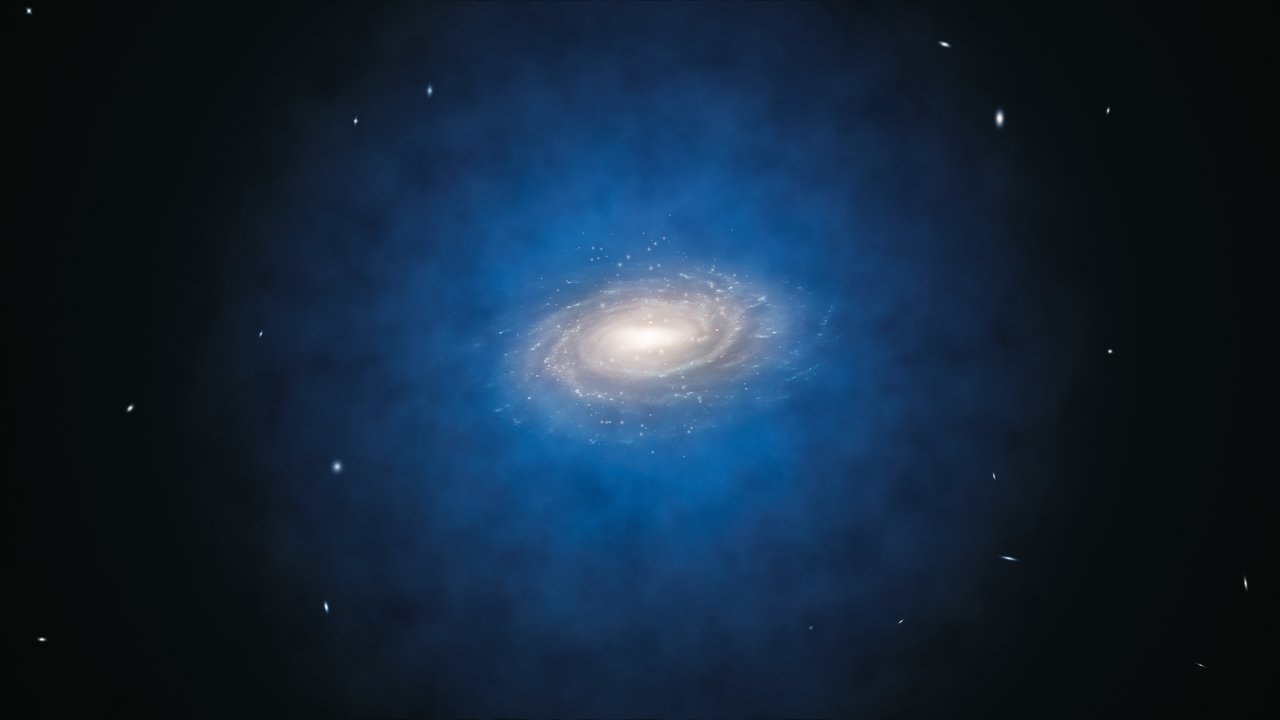
Discovering highly unstable and explosive "axion stars" could help scientists finally shed light on the universe's most mysterious stuff: Dark matter.
Despite accounting for an estimated 85% of the universe's mass, dark matter remains effectively invisible because it doesn't interact with light. That also means it can't be made up of particles like electrons and protons that composes the atoms that come together to form stars, planets, moons and our bodies.
This has spurred scientists to search for the elusive particles that could indeed account for dark matter. One of the leading suspects for dark matter are called "axions," light-mass particles first theorized in 1977. New research suggests axions could be found if scientists look for regions in which the particles may have gotten clumped up. Potentially, such clumps may have created axion stars — with explosive results.
Related: Dark matter detected dangling from the cosmic web for 1st time
"Axions are one of the prime candidates for dark matter. We discovered that they have the capacity to heat the universe just like supernovas and ordinary stars after coming together in dense clumps," Malcolm Fairbairn, team member a professor at King's College London, said in a statement. "Armed with that knowledge, we know with far more certainty where to point our instruments out in the field to find them."
Dark matter mystery may go out with a bang
Dark matter may not interact with photons of light, the particles associated with the electromagnetic force, but it does interact with one of the universe's other four fundamental forces: gravity.
In fact, dark matter was discovered in the first place when scientists realized some galaxies are rotating so fast that the gravity associated with all the visible mass within them wouldn't be enough to hold them together. There had to be something else. Plus, in addition to discovering that dark matter is preventing galaxies from flying apart, scientists now believe that most, if not all, large galaxies are enveloped by halos of dark matter that extend far beyond their visible disks and halos of stars, gas and dust.
That means if dark matter is made of axions, these low-mass particles must exist in great numbers to account for such observed gravitational effects. It would also imply there are areas in which axions are densely packed. In those regions, axions would likely begin to act in unison as a result of the laws of quantum physics. This could cause large groups of axons at the heart of galaxies to form axion stars.
These axion stars wouldn't be as long-lived as the dark matter haloes that surround galaxies, however, the team says.

Axion stars, should they exist, would become unstable once they reach a certain mass. This would result in the stars exploding and releasing bursts of radiation.
The team thinks this radiation may have heated gas that once existed between galaxies during the time period between the creation of the first atoms in the universe and the formation of the first stars, around 50 million to 500 million years after the Big Bang.
The bonding of electrons to protons to create the first atoms during an era of the universe called the era of recombination also meant free electrons were no longer endlessly scattering photons. Thus, the universe suddenly became transparent to light, and this "first light" can now be seen in the form of a cosmic fossil that uniformly fills the universe, radiation called the "cosmic microwave background" or "CMB."
The team behind this research thinks explosions of axion stars in the early universe could have left imprints in the CMB. Thus, searching for this signature, using radio waves known as the 21-centimeter measurement, could confirm the axion nature of dark matter.
"Coherent axion stars, even those which are relatively compact, have the potential to burst into a halo of electromagnetism and light," Fairbairn said. "Knowing the kind of structures axion dark matter can form and its impact on surrounding intergalactic gas can pave new ways for its detection.
"Being able to find the axion would likely help us solve one of science's biggest questions, over a century in the making, and help lay bare the history of the early universe."
Calculating the number of axion stars that exist could ultimately reveal the full explosion potential of these unstable gatherings of dark matter and help explain how those explosions may interact with intergalactic gas. This will, in turn, give a hint at the size of the signal hiding in the CMB.
"21cm measurement is generally seen as the future of cosmology, and the part that it plays in the search for the axion is a large reason for that," King's College London researcher David Marsh said. "There is currently a huge proliferation of axion searches being built, including projects like Dark Matter Radio. It is a very, very exciting time to be an astrophysicist right now."
The research on axion stars was published across a series of papers in the journal Physical Review D.







